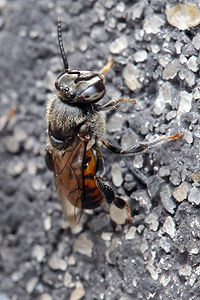
Photo from wikipedia
Search algorithm plays an important role in the motion planning of the robot, it determines whether the mobile robot complete the task. To solve the search task in complex environments,… Click to show full abstract
Search algorithm plays an important role in the motion planning of the robot, it determines whether the mobile robot complete the task. To solve the search task in complex environments, a fusion algorithm based on the Flower Pollination algorithm and Q-learning is proposed. To improve the accuracy, an improved grid map is used in the section of environment modeling to change the original static grid to a combination of static and dynamic grids. Secondly, a combination of Q-learning and Flower Pollination algorithm is used to complete the initialization of the Q-table and accelerate the efficiency of the search and rescue robot path search. A combination of static and dynamic reward function is proposed for the different situations encountered by the search and rescue robot during the search process, as a way to allow the search and rescue robot to get better different feedback results in each specific situation. The experiments are divided into two parts: typical and improved grid map path planning. Experiments show that the improved grid map can increase the success rate and the FIQL can be used by the search and rescue robot to accomplish the task in a complex environment. Compared with other algorithms, FIQL can reduce the number of iterations, improve the adaptability of the search and rescue robot to complex environments, and have the advantages of short convergence time and small computational effort.
Journal Title: PLOS ONE
Year Published: 2023
Link to full text (if available)
Share on Social Media: Sign Up to like & get
recommendations!